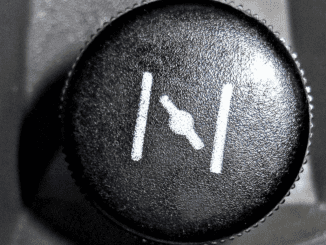If you’ve ever come across a dog with a red collar, you might wonder if it carries a special meaning. Seeing a red collar on a dog during a stroll can sometimes be confusing, especially when it seems to catch people’s attention or even stir concern. Many dog owners use collar colors to signal specific information about their pets, and understanding these codes can help foster respectful and safe interactions between dogs and the public.

The History and Symbolism of Dog Collars
Dog collars have been around for centuries, serving multiple purposes. While they were initially used for identification and control, they’ve evolved into tools that convey messages about a dog’s personality, health, or behavior. The symbolism of colors in our society—such as red for caution or alert—has found its way into dog accessories. A red collar, for example, may serve as a subtle message from the owner to others, hinting that there’s something about the dog that requires awareness or caution.
Color Codes for Dog Collars: What They Mean
Several color codes have become commonly recognized in the world of dog ownership, though they aren’t officially standardized. Here’s a quick breakdown of some frequently used colors:
- Green: Often denotes a friendly dog, approachable by people and other dogs.
- Yellow: May signal that a dog is nervous, anxious, or requires a bit of space.
- Blue: Usually represents a service dog or a dog in training.
- Red: Typically indicates caution, as it may mean the dog has behavioral issues, is in training, or simply needs more personal space.
While these colors aren’t universally recognized rules, informed dog owners often use them to communicate their dog’s needs nonverbally.
What Does a Red Collar Specifically Indicate?
A red collar generally serves as a signal to be cautious around the dog. This might mean the dog is reactive to other animals, uncomfortable with strangers, or in the middle of a focused training regimen. Some dogs with a red collar might have had traumatic experiences, making them more sensitive to sudden movements or touch. In many cases, the red collar isn’t about the dog being unwell but rather about the owner’s request to allow the dog more space.
So, does this mean that all dogs wearing a red collar are aggressive or unfriendly? Not at all. It’s more about creating an environment where the dog feels secure, and the red collar acts as a visual cue for others to approach with caution and respect.
Does a Red Collar Mean the Dog is Unwell?
While a red collar can sometimes indicate a health issue, it’s not its primary purpose. If a dog is sick, an owner might choose a red collar as a precautionary measure to keep interactions minimal, reducing the risk of overstimulation or accidental rough play. However, the most common reason for a red collar lies in the behavioral realm. The dog may simply be anxious, reactive, or in training, and the red color helps communicate a need for space without requiring verbal explanations from the owner.

Why There’s Room for Misinterpretation of a Red Collar
The use of a red collar can sometimes lead to mixed reactions and assumptions. Without a universal standard for collar colors, some people might interpret a red collar as a warning sign, while others may think it’s just a fashion choice. Misinterpretations could create unnecessary fear or, conversely, a lack of caution in some cases. For this reason, it’s always best for pet owners to educate themselves on common color codes and communicate clearly about their dog’s needs.
Emotional and Practical Considerations for Pet Owners
Choosing a collar color for a dog goes beyond aesthetics—it’s an emotional decision that reflects the owner’s intentions for the dog’s safety and well-being. A red collar can offer pet owners peace of mind, serving as a silent signal that discourages unwanted attention or interactions. However, it’s equally essential to understand how the message might be perceived and to choose color codes responsibly. Some owners even choose to add tags specifying “I need space” or “In training” to make the purpose clearer.
The Importance of Understanding Dog Collar Color Codes
Knowing what different collar colors mean is an excellent way to contribute to a respectful and safe environment for both pets and people. Whether you’re a dog owner or simply a dog lover, recognizing these visual signals can help avoid miscommunication and potential incidents. Being aware of color codes can also make parks, sidewalks, and other public spaces more harmonious, allowing each dog and owner to enjoy their time outdoors with minimal stress.

Real-Life Situational Awareness: Red Collars in Action
Imagine walking in the park and seeing a dog with a red collar. Instead of approaching the dog enthusiastically or assuming it’s a threat, understanding the significance of a red collar allows you to pause and assess the situation. A slight nod to the owner can show respect for their choice to signal a need for space, creating a positive experience for everyone involved. This awareness fosters a more thoughtful community of pet owners and bystanders, reducing the chances of uncomfortable interactions.
Conclusion
A red collar on a dog serves as more than a fashionable statement; it’s a practical tool for communicating specific needs or conditions related to the dog’s behavior, health, or training. Recognizing this symbol helps pet owners and the public engage with dogs in a way that promotes safety and respect. Whether it’s signaling a request for space or indicating behavioral quirks, a red collar is part of a broader language that responsible pet owners use to create a secure environment for their furry friends.
So, the next time you spot a dog with a red collar, you’ll know that it’s not just about the color—it’s a thoughtful choice aimed at making interactions safer and more considerate for everyone involved.


